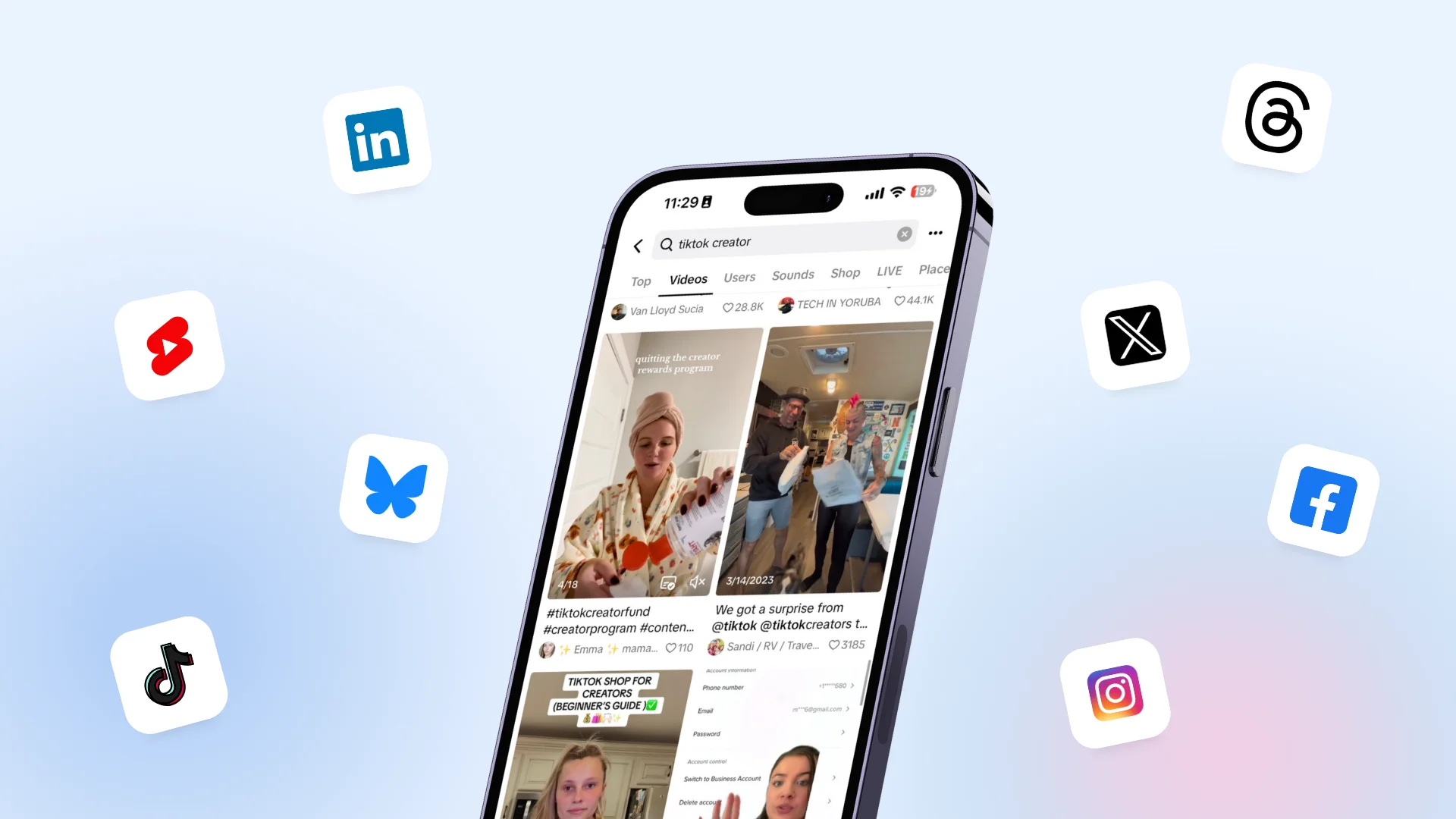New

Turn Your DMs Into Lead Gen!
Learn how to collect lead data from your DMs such as email addresses, phone numbers, and more right from your social inbox. If you are not yet automating your DMs your competitors are outpacing you.

How Something Social Saved 75% of Their Time and Increased Revenue by 15%
See how a fast-growing agency improved operations, cut down hours of manual work, and unlocked new revenue opportunities with Vista Social.
New

50 Unique Social Media Ideas for Consistent Content Creation
Discover 50 unique social media post ideas to engage your audience, grow your brand, and maintain a consistent content strategy with ease!

Mastering Content Reuse: The Key to a Consistent and Sustainable Posting Strategy
Crowdsourcing
Crowdsourcing is the act of collecting services, ideas or content through the contributions of a large group of people. Typically, the “crowd” in crowdsourcing is a third-party unrelated to the business seeking results. You may crowdsource insights from customers and online communities, rather than employees or shareholders.
The term “crowdsourcing” first appeared in a Wired article by Jeff Howe in 2006. The word emphasized a new way of connecting with people willing to work collaboratively on a project.
Types of crowdsourcing
Crowdsourcing is a rapidly growing industry with multiple subsections. The kind of crowdsourcing you choose will depend on the outcome you’re looking for:
- Crowdfunding: With crowdfunding, large groups of people come together to fund a project. Kickstarter is a popular example of a crowdfunding platform.
- Crowdwisdom: In Crowdwisdom, companies seek out the input and opinions of large groups of people. Sites like Yahoo Answers or InnoCentive allow people to share their thoughts on complex topics.
- Microtasking: Microtasking breaks a massive project down into multiple small tasks ready to be assigned to a crowd. For instance, if you wanted a design for your new cup like Starbucks did in 2014, you might ask your customers to create compositions and vote on their favorites for you. That’s precisely what happened with the Starbucks white cup contest.

The benefits of crowdsourcing
Crowdsourcing presents significant benefits to companies hoping to complete complex tasks on a budget. Additionally, opening up to the wisdom and input of the crowd elevates customer engagement and improve brand reputation. Crowdsourcing has the power to:
- Keeps customers engaged: Crowdsourcing demonstrates to your audience that you value their opinion, leading to stronger brand connections and trust. Additionally, customers are more likely to feel involved with campaign concepts, service ideas and products they helped to create.
- Promotes innovation & diversity: Gaining access the thoughts of a broad group of diverse people allows for more out-of-the-box thinking. Crowdsourced concepts access the wisdom of groups to help companies innovate.
- Saves time and money: Connecting with dozens or even hundreds of professionals is typically expensive. However, bringing people together digitally reduces cost and widens the parameters for input.
- Attracts ambassadors: If crowdsourcing collects enough positive enthusiasm from your audience, participants evolve into brand ambassadors. Your new ambassadors may be an excellent source of word of mouth marketing.
Tips for better crowdsourcing
Try Vista Social for Free
A social media management platform that actually helps you grow with easy-to-use content planning, scheduling, engagement and analytics tools.
Get Started NowCrowdsourcing is an excellent way to overcome challenges and simultaneously create buzz for your brand. However, like any company campaign, crowdsourcing requires intentional planning and strategy. Make sure you:
- Be specific: Outline precisely what you want people to do, with guidelines for submissions. Aim to keep your requests simple too, as this will reduce the risk of participation.
- Specify how to measure results: Have a way of tracking your incoming submissions. For instance, Starbucks asked customers to rate their favorite designs.
- Give value to participants: Remember it’s not all about you. Give your customers an incentive to get involved. For instance, in the Lay’s “Do us a Flavor” campaign, the chip company allows customers to choose their own flavors to bring to life. The result is new ideas for Lay’s and new taste experiences for consumers.


stronger relationships on social
Vista Social helps you understand and reach your audience, engage your community and measure performance with the only all-in-one social media management with easy-to-use features like publishing, engagement, reviews, reports and listening.